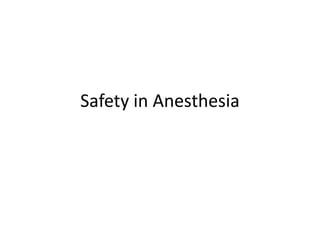Anesthesia carries risks that can lead to patient death or injury. Several factors contribute to risks in the operating room including equipment issues, patient health factors, human performance errors, and system failures. Some key errors that can cause severe harm are airway issues, medication errors, and procedure mistakes. Maintaining vigilance, checklists, standards, training, and learning from adverse events can help improve safety. Thorough documentation and review of incidents is important for quality assurance.



























































